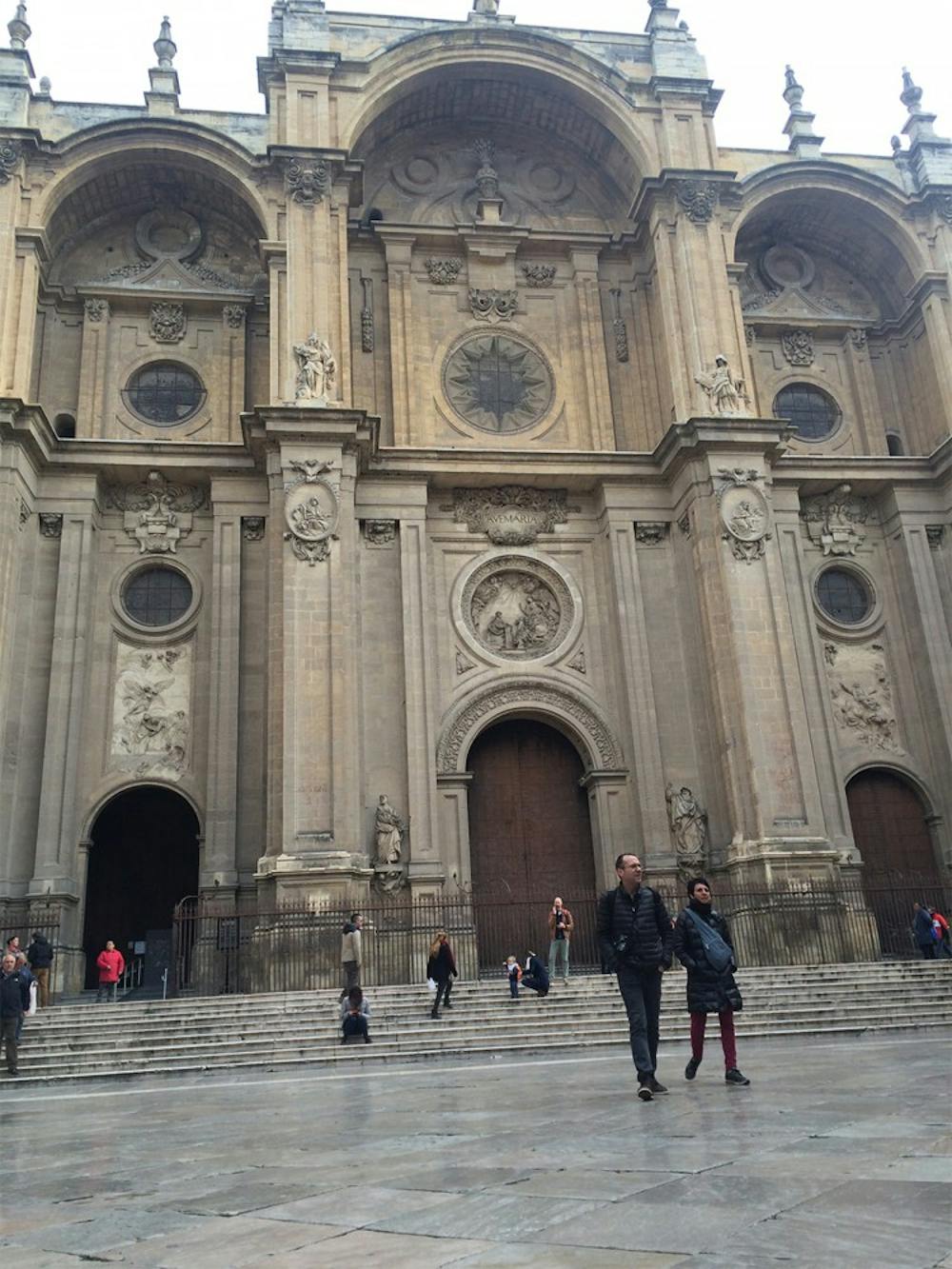One of the greatest aspects that make up Sevillano culture is its large tie to the Catholic religion.
On my walk to class on an average day, I pass about six churches. The city shuts down on Sundays in observance of the Sabbath, with family and faith as the main priority.
At first I thought the integration was fascinating, as I saw everyone pass the memorials to Christ with such grandeur and respect.
I have never really been exposed to the Catholic religion — or to Christianity, for that matter — so it was definitely an adjustment, to say the least. It is a rarity that my host mother does not attend church. For others, the norm is to go two or three times a week.
There are times when I am walking past a church during evening mass and the entire street is filled with the sounds of hymns, making my walk to meet my friends something I could rarely experience in the states.
This past weekend, I took a day trip to Granada, only a three hour train ride away from my home in Seville.
One of my friends had done some research to find the top attractions to fill our day. Her results included the Alhambra, a series of ancient Muslim palaces and gardens, and La Catedral, another church representing the Spanish Renaissance.
When visiting Seville, one of the top attractions is again La Catedral. This one is much larger and more intricate, with strong connections to Christopher Columbus, but in the end it is another church.
Yes, both buildings are gorgeous with the complex, detailed decorations and paintings on the walls. Every aspect was done by hand, from the painted flowers on the edges of a book to the subtle engravings within the organ piping.
I just couldn’t believe that the churches I had visited in two of the major cities in Spain were known as the top tourist attractions.
In the United States, when someone visits a new city for the first time, there is always a list of activities in mind. Very rarely, at least in my experience, does that include a tour of the religious buildings within that area.
While visiting Granada, I started asking a question regarding all of the different alters and memorials. I was told they were the different saints chosen by God that all specialize in a certain aspect of a person’s life. So if you wanted assistance in that certain aspect, you would pray to that specific saint instead of God for support.
This idea shocked me somewhat, because it sounded like people in the Catholic religion prayed to many “idols,” something strictly forbidden in Judaism, which Catholicism streamed from initially. Who would have thought I would be receiving an entire theology lesson in the middle of a more than 450-year-old building in a city I knew little about?
That is again the definition of abroad, or at least how I have continued to define it this entire experience. If you stop asking questions, the adventures will cease shortly after.
Alyson Malinger
afmaling@indiana.edu






